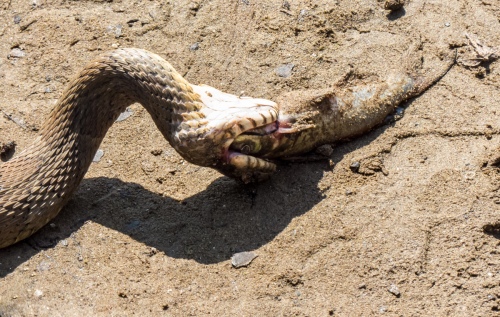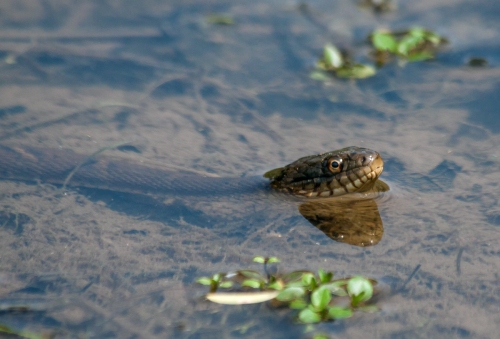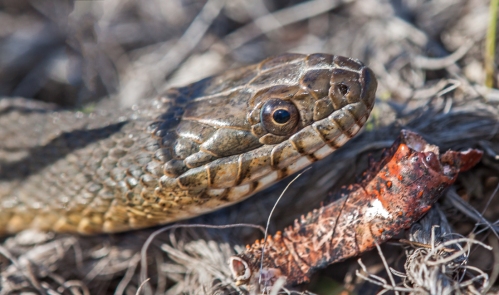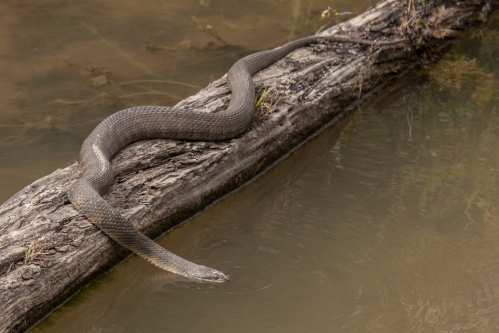It may appear to be the Loch Ness monster, but I am pretty sure that it is “only” a Northern Water Snake (Nerodia sipedon). I stumbled upon it yesterday while exploring Riverbend Park in Great Falls, Virginia just after it had caught a pretty good-sized catfish. It took a while to subdue the fish, but the snake eventually was able to swallow it.
I have seen snakes like this catch small fish before, but I was shocked to see the size of its catch this time. How does a snake subdue and immobilize a fish that big? Northern Water Snakes are not poisonous, though I have been told that their bite can be quite painful and that the snake injects an anti-coagulant into your system, so that you will bleed a lot. The snake swam around with the fish for quite some time, periodically rearing its head and part of its body out of the water. The snake’s mouth seemed to have a literal death grip on the fish.
I watched the action with a mixture of horror and fascination, frozen in place to avoid spooking the snake. The snake seemed to be adjusting the position of the fish, as I had seen herons do, and I wondered how it could possibly swallow the fish. Suddenly there was a lot of movement in the water, the snake’s body started to writhe, and the fish simply disappeared, except for a small piece of the tail still sticking out of the fish’s mouth.
I still don’t know exactly how the snake ingested the fish—one minute it was then and then in a blink of an eye it wasn’t. It seemed like some kind of magical legerdemain (which is probably the wrong term for a limbless creature), though I suspect that the snake has powerful muscles that enabled it to pull in the fish all at once.
There are signs in Riverbend Park warning folks not to swim in the Potomac River, probably because of the current. I think that I have found another reason to stay out of the water.





© Michael Q. Powell. All rights reserved
Read Full Post »









































